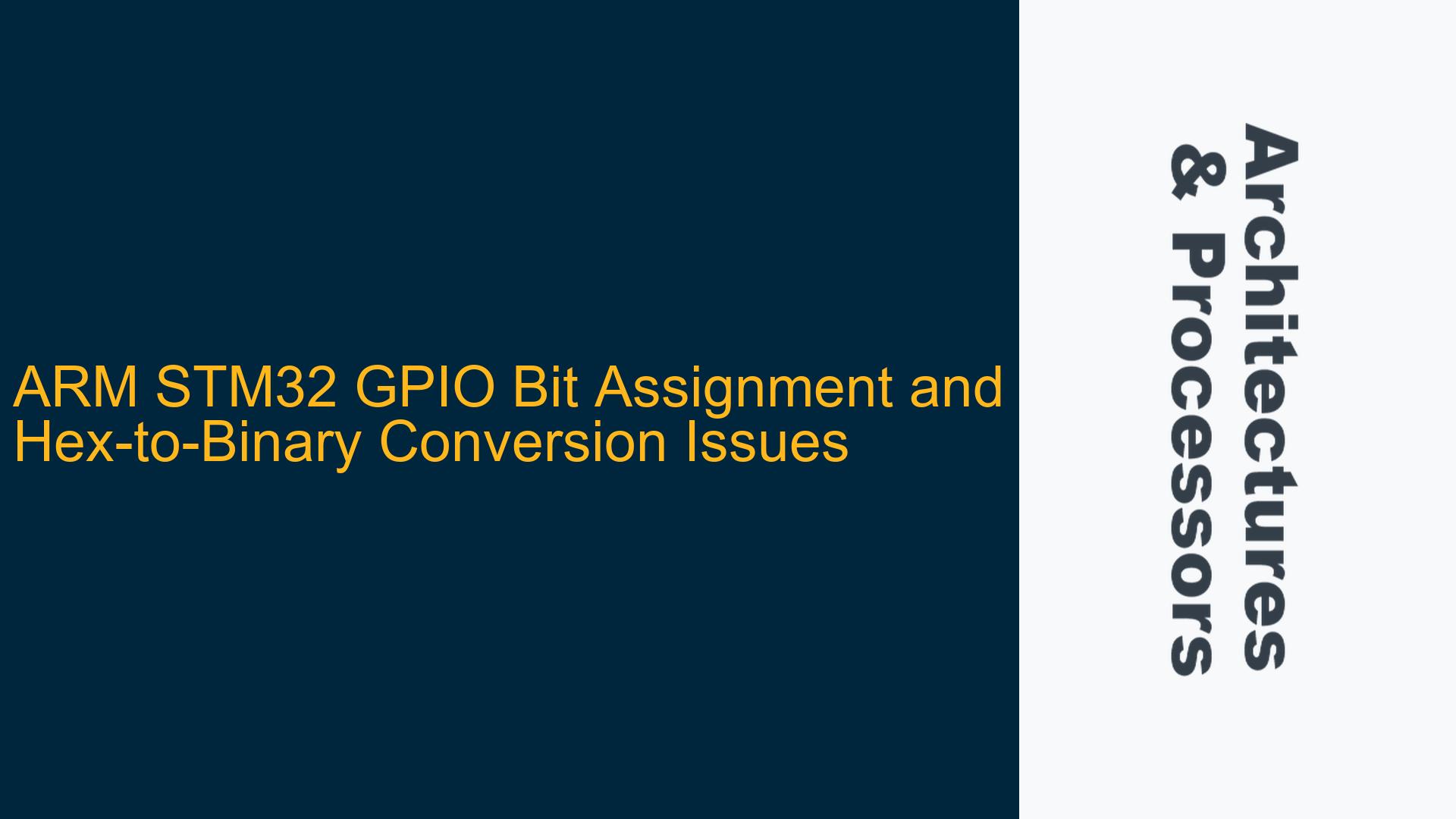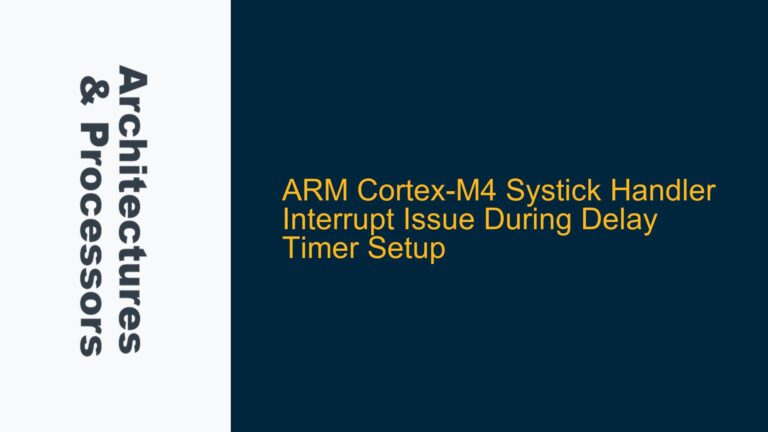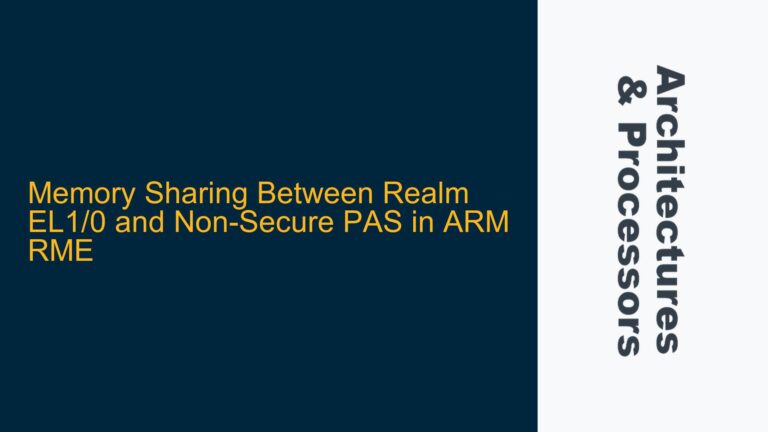ARM STM32 GPIO Bit Assignment Challenges in Hex-to-Binary Conversion
When working with ARM-based microcontrollers like the STM32 series, a common task is to manipulate individual GPIO pins to reflect the binary representation of a hexadecimal value. This involves converting a hexadecimal value to its binary equivalent and then assigning each bit of the binary representation to a specific GPIO pin. However, this seemingly straightforward task can present several challenges, particularly when dealing with the absence of single-bit data types like sbit in ARM architectures. The core issue revolves around efficiently mapping individual bits of a byte to GPIO pins while ensuring proper configuration and control of the GPIO port registers.
The STM32 family of microcontrollers uses a memory-mapped I/O system, where GPIO pins are controlled via specific registers. Each GPIO port (e.g., GPIOA, GPIOB, etc.) has a set of registers, including the Output Data Register (ODR), which controls the state of the output pins. To assign individual bits of a byte to GPIO pins, the developer must manipulate the ODR or similar registers directly. However, the lack of a single-bit data type in ARM architectures means that developers must use bitwise operations to set or clear individual bits in these registers.
The primary challenge lies in ensuring that the correct bits are set or cleared without affecting the state of other GPIO pins in the same port. Additionally, the process of converting a hexadecimal value to its binary representation and then mapping each bit to a GPIO pin requires careful handling of data types and bitwise operations. Missteps in this process can lead to incorrect GPIO pin states, unintended side effects on other pins, or inefficient code execution.
Memory-Mapped GPIO Registers and Bitwise Operation Misuse
One of the primary causes of issues in assigning bits to GPIO pins on STM32 microcontrollers is the improper use of memory-mapped GPIO registers and bitwise operations. The GPIO ports on STM32 devices are controlled through a set of registers, including the ODR, which is used to set or clear the state of output pins. Each bit in the ODR corresponds to a specific GPIO pin. For example, bit 0 of the ODR controls pin 0 of the GPIO port, bit 1 controls pin 1, and so on.
When attempting to assign individual bits of a byte to GPIO pins, developers often make the mistake of directly writing to the ODR without considering the current state of other pins in the port. This can lead to unintended side effects, as writing to the ODR affects all bits in the register. For instance, if a developer writes a value to the ODR to set a specific pin, they may inadvertently clear other pins in the same port.
Another common issue is the misuse of bitwise operations. Bitwise operations are essential for manipulating individual bits in a register, but they must be used correctly to avoid unintended consequences. For example, using the bitwise OR operator (|) to set a bit in the ODR without first clearing the other bits can result in incorrect pin states. Similarly, using the bitwise AND operator (&) to clear a bit without preserving the state of other bits can lead to unintended changes in the GPIO port.
The absence of a single-bit data type in ARM architectures exacerbates these issues. Without a dedicated data type for single-bit manipulation, developers must rely on bitwise operations to set or clear individual bits in the ODR. This requires a deep understanding of how bitwise operations work and how they affect the state of the GPIO port.
Efficient GPIO Bit Assignment Using Bitwise Operations and Register Manipulation
To address the challenges of assigning individual bits of a byte to GPIO pins on STM32 microcontrollers, developers must adopt a systematic approach that leverages bitwise operations and proper register manipulation. The following steps outline a robust method for achieving this:
Step 1: Configure GPIO Pins as Outputs
Before assigning bits to GPIO pins, ensure that the relevant GPIO pins are configured as outputs. This involves setting the appropriate bits in the GPIO port’s Mode Register (MODER). For example, to configure pins 0 to 7 of GPIOA as outputs, you would set the corresponding bits in the MODER register:
GPIOA->MODER &= ~(0xFFFF); // Clear the mode bits for pins 0-7
GPIOA->MODER |= 0x5555; // Set pins 0-7 to output mode (01)
Step 2: Convert Hexadecimal Value to Binary Representation
Convert the hexadecimal value to its binary representation. This can be done using bitwise operations or by simply interpreting the hexadecimal value as a binary number. For example, the hexadecimal value 0x3A corresponds to the binary value 00111010.
Step 3: Map Each Bit to a GPIO Pin
Map each bit of the binary representation to a specific GPIO pin. This involves using bitwise operations to set or clear the corresponding bits in the ODR. To set a specific bit in the ODR, use the bitwise OR operator (|). To clear a bit, use the bitwise AND operator (&) with the complement of the bit mask.
For example, to assign the binary value 00111010 to pins 0 to 7 of GPIOA, you would perform the following operations:
uint8_t binaryValue = 0x3A; // Binary: 00111010
// Clear all bits in the ODR for pins 0-7
GPIOA->ODR &= ~(0xFF);
// Set the bits in the ODR based on the binary value
GPIOA->ODR |= (binaryValue & 0xFF);
Step 4: Preserve the State of Other GPIO Pins
When setting or clearing bits in the ODR, it is essential to preserve the state of other GPIO pins in the same port. This can be achieved by reading the current state of the ODR, modifying the relevant bits, and then writing the updated value back to the ODR. For example:
uint8_t binaryValue = 0x3A; // Binary: 00111010
// Read the current state of the ODR
uint16_t currentODR = GPIOA->ODR;
// Clear the bits for pins 0-7
currentODR &= ~(0xFF);
// Set the bits based on the binary value
currentODR |= (binaryValue & 0xFF);
// Write the updated value back to the ODR
GPIOA->ODR = currentODR;
Step 5: Optimize for Performance
In performance-critical applications, it may be necessary to optimize the bit assignment process. This can be achieved by minimizing the number of read-modify-write operations and using direct register manipulation where possible. For example, instead of reading the ODR, modifying it, and then writing it back, you can directly write the desired value to the ODR if you know the state of all pins in the port:
uint8_t binaryValue = 0x3A; // Binary: 00111010
// Directly write the binary value to the ODR for pins 0-7
GPIOA->ODR = (GPIOA->ODR & ~(0xFF)) | (binaryValue & 0xFF);
Step 6: Verify GPIO Pin States
After assigning bits to GPIO pins, verify that the pins are in the correct state. This can be done by reading the ODR or by using a logic analyzer or oscilloscope to observe the actual pin states. If the pins are not in the expected state, review the bitwise operations and register manipulation steps to identify any errors.
Step 7: Handle Edge Cases
Consider edge cases, such as assigning bits to GPIO pins that are already in use for other purposes. Ensure that the bit assignment process does not interfere with the functionality of other pins in the same port. If necessary, use additional bitwise operations to mask out pins that should not be modified.
Step 8: Implement Error Handling
Implement error handling to detect and respond to any issues that may arise during the bit assignment process. For example, if a GPIO pin fails to change state, the system should log an error or take corrective action.
Step 9: Document the Code
Document the code thoroughly to ensure that other developers can understand and maintain it. Include comments that explain the purpose of each bitwise operation and register manipulation step. This will help prevent future issues and make it easier to debug any problems that arise.
Step 10: Test Thoroughly
Test the bit assignment process thoroughly under various conditions to ensure that it works as expected. This includes testing with different hexadecimal values, different GPIO ports, and different configurations of the GPIO pins.
By following these steps, developers can efficiently assign individual bits of a byte to GPIO pins on STM32 microcontrollers, ensuring reliable and accurate control of the GPIO ports. Proper use of bitwise operations and register manipulation is key to achieving this, and careful attention to detail is required to avoid unintended side effects and ensure optimal performance.






